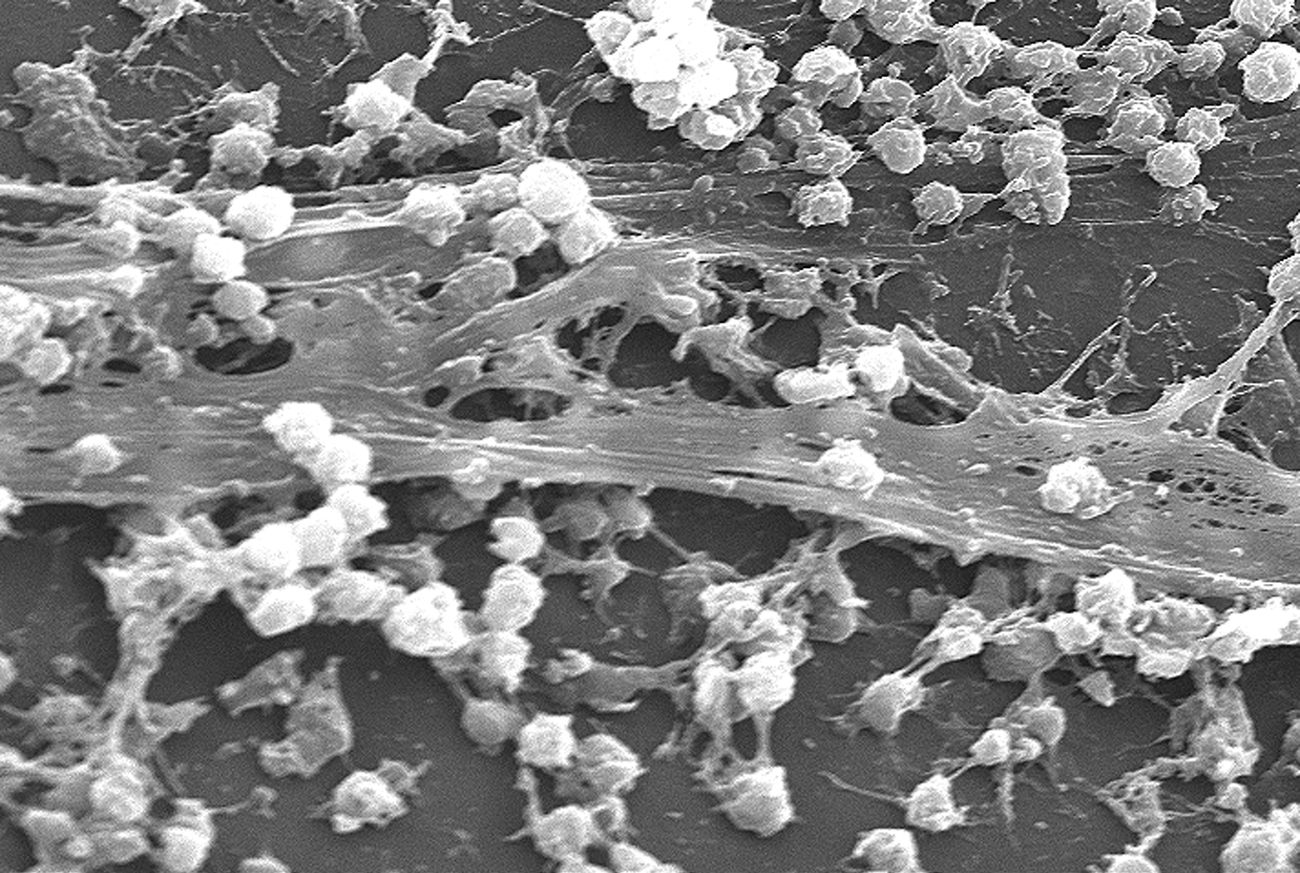
Biofilm might sound like something out of a sci-fi movie, but it's very real and all around us. Biofilms are communities of microorganisms that stick to surfaces, creating a slimy layer. They can form on everything from your teeth to medical devices. These tiny ecosystems are incredibly resilient, making them tough to remove and often resistant to antibiotics. Understanding biofilms is crucial because they play a role in infections, industrial processes, and even environmental cleanup. Ready to learn more? Here are 33 fascinating facts about biofilm that will change how you see the microscopic world.
What is Biofilm?
Biofilm is a community of microorganisms that stick to each other and surfaces. These microorganisms produce a slimy, glue-like substance that helps them adhere to surfaces. Biofilms can form on various surfaces, including medical devices, pipes, and even teeth.
- Biofilms are composed of bacteria, fungi, and other microorganisms.
- They produce extracellular polymeric substances (EPS), which act like glue.
- Biofilms can form on living and non-living surfaces.
- They are often found in natural, industrial, and hospital settings.
How Do Biofilms Form?
Biofilm formation is a multi-step process that begins with the attachment of free-floating microorganisms to a surface. This process can be influenced by various factors, including the type of surface and the environment.
- Initial attachment is reversible; microorganisms can detach if conditions are unfavorable.
- Once attached, microorganisms begin to produce EPS, making the attachment irreversible.
- The biofilm matures as more microorganisms join and EPS production increases.
- Mature biofilms can release cells to colonize new surfaces.
Where Can You Find Biofilms?
Biofilms are incredibly versatile and can be found in a wide range of environments. Their ability to thrive in diverse conditions makes them both fascinating and challenging to manage.
- Dental plaque is a common biofilm found on teeth.
- Biofilms can form on medical devices like catheters and implants.
- They are present in natural environments like rivers and oceans.
- Industrial settings, such as water treatment plants, often deal with biofilms.
Why Are Biofilms Important?
Biofilms play a significant role in various fields, from healthcare to environmental science. Understanding their importance can help in managing their impact.
- Biofilms can protect microorganisms from antibiotics and disinfectants.
- They are involved in nutrient cycling in natural ecosystems.
- Biofilms can cause chronic infections that are difficult to treat.
- They can lead to the corrosion of industrial equipment.
Challenges in Biofilm Research
Studying biofilms presents unique challenges due to their complex structure and behavior. Researchers are continually developing new methods to better understand and control biofilms.
- Biofilms are heterogeneous, making them difficult to study uniformly.
- Traditional laboratory techniques may not accurately represent biofilm behavior.
- Biofilms can rapidly adapt to changing conditions, complicating research.
- Advanced imaging techniques are often required to study biofilms in detail.
Biofilm Control and Prevention
Controlling and preventing biofilm formation is crucial in many industries and healthcare settings. Various strategies are employed to manage biofilms effectively.
- Regular cleaning and disinfection can help prevent biofilm formation.
- Antimicrobial coatings on medical devices can reduce biofilm risk.
- Enzymatic treatments can break down EPS, disrupting biofilms.
- Physical removal methods, like brushing or scraping, are often used.
Interesting Facts About Biofilms
Biofilms have some surprising characteristics that make them both fascinating and challenging to deal with. These interesting facts highlight the complexity and adaptability of biofilms.
- Biofilms can communicate through chemical signals in a process called quorum sensing.
- They can form in extreme environments, like hot springs and deep-sea vents.
- Biofilms can be beneficial, such as in wastewater treatment processes.
- Some biofilms can produce electricity through microbial fuel cells.
Future Directions in Biofilm Research
The study of biofilms is an ever-evolving field with many exciting possibilities. Future research aims to better understand biofilms and develop new strategies for managing them.
- Researchers are exploring the use of nanotechnology to target biofilms.
- Genetic engineering may offer new ways to disrupt biofilm formation.
- Understanding biofilm resistance mechanisms can lead to better treatments.
- Biofilm research can contribute to the development of new antibiotics.
Biofilms in Everyday Life
Biofilms are more common in daily life than one might think. They can be found in various places and can impact everyday activities.
- Kitchen sponges can harbor biofilms, making them a source of contamination.
The Final Scoop on Biofilm
Biofilm is everywhere, from your teeth to underwater ship hulls. These slimy layers of bacteria and other microorganisms stick to surfaces, creating a protective environment. They can be both helpful and harmful. In medicine, biofilms can cause infections that are tough to treat. On the flip side, they play a crucial role in wastewater treatment and bioremediation.
Understanding biofilm helps us tackle issues in healthcare, industry, and environmental science. Knowing how they form and thrive can lead to better cleaning methods, medical treatments, and environmental solutions. So next time you see a slimy surface, remember there's a whole microscopic world at work. Biofilm might be tiny, but its impact is huge. Keep these facts in mind, and you'll appreciate the hidden complexities of this fascinating microbial community.
Was this page helpful?
Our commitment to delivering trustworthy and engaging content is at the heart of what we do. Each fact on our site is contributed by real users like you, bringing a wealth of diverse insights and information. To ensure the highest standards of accuracy and reliability, our dedicated editors meticulously review each submission. This process guarantees that the facts we share are not only fascinating but also credible. Trust in our commitment to quality and authenticity as you explore and learn with us.
